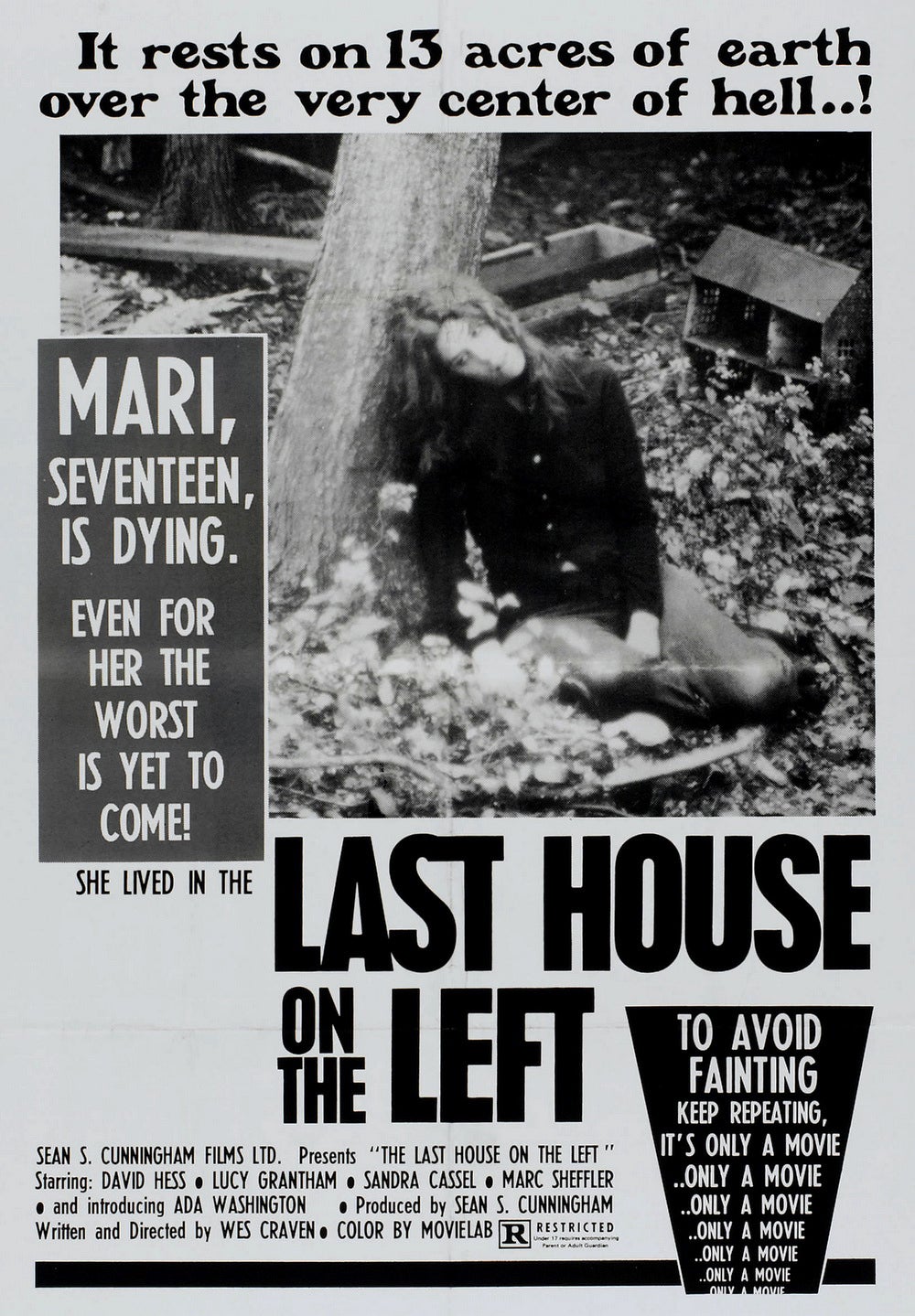13 films that made audiences faint and be sick: ‘I couldn’t take it anymore’
From the ambulances called to a Cineworld in Bolton to the infamous castration scene cut for inciting panic attacks, Adam White gathers 13 notorious films that truly tested the endurance of their viewers


Your support helps us to tell the story
From reproductive rights to climate change to Big Tech, The Independent is on the ground when the story is developing. Whether it's investigating the financials of Elon Musk's pro-Trump PAC or producing our latest documentary, 'The A Word', which shines a light on the American women fighting for reproductive rights, we know how important it is to parse out the facts from the messaging.
At such a critical moment in US history, we need reporters on the ground. Your donation allows us to keep sending journalists to speak to both sides of the story.
The Independent is trusted by Americans across the entire political spectrum. And unlike many other quality news outlets, we choose not to lock Americans out of our reporting and analysis with paywalls. We believe quality journalism should be available to everyone, paid for by those who can afford it.
Your support makes all the difference.Any good horror director will want their audiences gasping in their seats. Or covering their eyes. Screaming, even. What no one is aiming for, though, is full body collapse. But film history is full of movies so shocking, strange or downright ugly that viewers just stopped being conscious while watching them.
Coincidence or not, a hell of a lot of them seem to be French. But others are more mainstream. Take Saw III, a film so gnarly that Bolton ambulances were put on stand-by after reports that filmgoers were passing out during scenes of brain surgery. Cry babies!
As reports emerge of yet another film – the laterest film in the Terrifier franchise – leaving audiences feeling rather queasy, here are 13 films that quite literally knocked people out.
Freaks (1932)
One of the most notorious horror films in history, Tod Browning’s Freaks cast real actors with disabilities and physical differences to play carnival attractions. Test screenings for the film – held in 1931 – were so disastrous that numerous audience members fainted. One went on to sue filmmakers at MGM, claiming that the film was so grotesque that she miscarried as a result. MGM naturally got cold feet and cut the 90-minute film down to 60 for release. A graphic castration scene has subsequently never seen the light of day. Probably for the best, that.
Pulp Fiction (1994)
For the pivotal scene in which John Travolta plunges a hypodermic needle into Uma Thurman’s chest after she overdoses, the act was filmed in reverse and then played backwards on-screen. The uncanny effect – sped up and accompanied by a morbid thud – proved too much for one audience member at the film’s world premiere in 1994. “They stopped the film,” actor Eric Stoltz said. “We were all in a box seat in the balcony, and I was mortified.” The lights went up, ushers flocked around the audience member in question, and he was brought back around with a glug of Coca Cola. Director Quentin Tarantino was probably ecstatic.
Saw III (2006)
“There were three separate call-outs to the Cineworld cinema in Stevenage on Friday night,” a spokesperson for the East Anglian Ambulance Trust said in a statement in 2006. The reason: that pesky mass murderer Jigsaw. Saw was the high priest of horror throughout the Noughties, with audiences sent into convulsions by needle pits, eyeball poking and ribcage removals. Saw III, though, seemed to be the most destructive, with reports of fainting in Bolton, Cambridge, Peterborough and Stevenage screenings.
The Blair Witch Project (1999)
It wasn’t the spookiness that made Blair Witch audiences hurl in 1999 – it was the filmmaking. After reports that the movie was upsetting stomachs across the US, cinemas began putting up warning signs about possible motion sickness and fainting spells due to its use of handheld cameras. It was too late for some, though, with tales of cinemagoers throwing up in the aisles and collapsing in Atlanta, Portland, Georgia and Dallas.

Irreversible (2002)
Gaspar Noé’s revenge drama features a 10-minute rape scene in a Paris underpass, and is the kind of thing the fast-forward button was practically designed for. For those trapped with it in a cinema screening, though, it’s a nightmare. Take the film’s premiere at Cannes in 2002, which led to at least 250 people walking out, and 20 people fainting. A fire brigade spokesperson said: “In 25 years in my job I’ve never seen this at the Cannes festival. The scenes in this film are unbearable, even for us professionals.”
127 Hours (2010)
Who’d have thought a film about a man removing his own arm with a pair of rusty pliers would be too much for some? This James Franco drama – based on the real story of climber Aron Ralston’s self-amputation – led to three people fainting and one person having a seizure when it premiered at the Toronto Film Festival in 2010. Even Ralston himself hated watching it, saying: “I was ecstatic to be getting out of there.”
The Exorcist (1973)
In 1973, The Exorcist was such a runaway smash that audiences lined up for hours for a chance to see it. Many were left scarred. As captured by news reports from the time, cinemagoers often emerged from screenings shaking and crying and unsure of what they’d just seen. The demonic possession tale was so terrifying for Seventies audiences that fainting and vomiting was widespread. “I just found it really horrible,” a trembling British woman told a news reporter, as captured in the YouTube compilation below. “I couldn’t take it anymore.”
Antichrist (2009)
Somewhere between scenes of a baby falling to its death and a scene of genital mutilation later on, Lars Von Trier’s Antichrist inspired one New Yorker to have a panic attack during a screening in 2009. Earlier that year – at the film’s premiere in Cannes – four people fainted, while its debut at the Toronto Film Festival led to at least one person vomiting. Von Trier was unbothered. “I don’t have to justify myself,” he said that year. “You are all my guests, it’s not the other way round.”
Prometheus (2012)
There were reports of cinemagoers fainting during the first Alien in 1979, and audiences hadn’t become desensitised by 2012, either. Upon the release of Alien prequel Prometheus, at least one person shared that they had fainted during a scene in which star Noomi Rapace aborts her own alien foetus. “The last thing I remember was watching her being stapled back together whilst the alien squid-thing lashed around in the tight auto-surgery chamber,” the person shared on an Alien message board.
The Last House on the Left (1972)

Wes Craven’s infamous rape-revenge movie sparked controversy even before it was released, with a graphic scene of sexual assault leading to audiences walking out and fainting. Because scandal sells, the film’s backers quickly exploited the horrified reactions and adjusted the film’s posters accordingly. Its new tagline? “To avoid fainting, keep repeating ‘It’s only a movie’, ‘...only a movie’.”
Raw (2016)
Julia Ducournau’s 2016 debut revolved around a young cannibal. The character’s graphic munching led to audience members passing out at the Toronto Film Festival. Because he’s very good at his job, the film’s publicist Ryan Werner quickly rushed out a statement confirming the story: “An ambulance had to be called to the scene as the film became too much for a couple patrons.”
Titane (2021)
Making Raw look like an episode of Junior Masterchef, Ducournau’s follow-up Titane doubled down on the gore. Full of self-mutilation, torture and graphic violence, Titane incited mass hysteria when it played at the Sydney Film Festival last year. In a statement, the festival confirmed 13 people had fainted. Earlier, at Cannes, there were other reports that fainting had occurred. As for Ducournau, she’s suggested most of the “fainting” stories may have been whipped up for marketing purposes. “I was in Cannes when Raw premiered and I didn’t see anyone faint or throw up, like many said,” she told Exberliner. Hmm.
Psycho (1960)
Alfred Hitchcock’s classic horror film proved so shocking to Sixties audiences that it seemed to spark a kind of collective mania in those who watched. Reports from New York at the time claimed that cinemas became hotbeds of hyperventilating, with police called to deal with mass fainting. Demands to have the film banned naturally followed, but proved unsuccessful.



Join our commenting forum
Join thought-provoking conversations, follow other Independent readers and see their replies
Comments